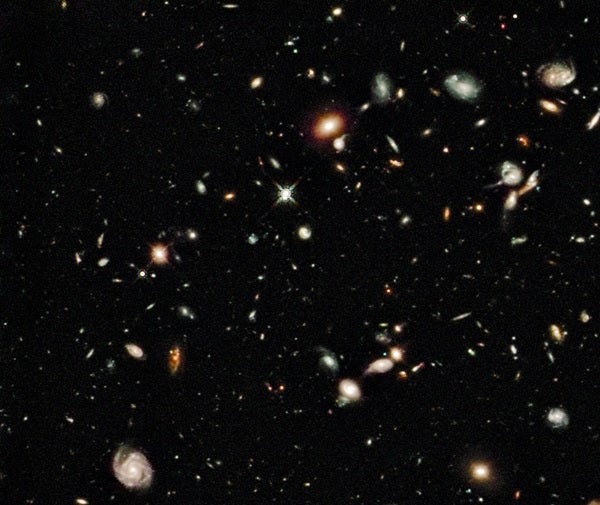The Hubble Ultra Deep Field contains the light from some galaxies that are 600 million years old (they existed 600 million light-years from the Big Bang). Today, we live about 13.7 billion years after the Big Bang, or, equivalently, we live 13.7 billion light-years away in terms of the distance light traveled.
We can determine the distance between us and those galaxies as the difference between our distance from the Big Bang and the distance of the observed galaxies from the Big Bang. That is: 13.7 – 0.6 = 13.1 billion light-years. The light from those distant galaxies traveled for 13.1 billion years to reach the Hubble Space Telescope — we are finally observing it right now.
By observing such distant galaxies with the Hubble Space Telescope, we get a snapshot of how the universe looked in its youth. This is similar to what happens when we receive a letter from a friend regarding some news. The letter gives us information about a past event, and we have no idea what has happened after the letter was sent. — Michele Trenti, Center for Astrophysics and Space Astronomy, University of Colorado, Boulder










